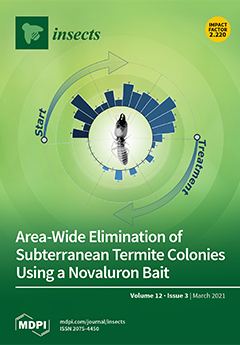New plant pathogen invasions typified by cryptic disease symptoms or those appearing sporadically in time and patchily in space, might go largely unnoticed and not taken seriously by ecologists. We present evidence that the recent invasion of
Pyrenopeziza plantaginis (Dermateaceae) into the Pacific Northwest USA, which causes foliar necrosis in the fall and winter on
Plantago lanceolata (plantain), the primary (non-native) foodplant for six of the eight extant Taylor’s checkerspot butterfly populations (
Euphydryas editha taylori, endangered species), has altered eco-evolutionary foodplant interactions to a degree that threatens butterfly populations with extinction. Patterns of butterfly, larval food plant, and
P. plantaginis disease development suggested the ancestral relationship was a two-foodplant system, with perennial
Castilleja spp. supporting oviposition and pre-diapause larvae, and the annual
Collinsia parviflora supporting post-diapause larvae. Plantain, in the absence of
P. plantaginis disease, provided larval food resources throughout all butterfly life stages and may explain plantain’s initial adoption by Taylor’s checkerspot. However, in the presence of severe
P. plantaginis disease, plantain-dependent butterfly populations experience a six-week period in the winter where post-diapause larvae lack essential plantain resources. Only
C. parviflora, which is rare and competitively inferior under present habitat conditions, can fulfill the post-diapause larval feeding requirements in the presence of severe
P. plantaginis disease. However, a germination timing experiment suggested
C. parviflora to be suitably timed for only Washington Taylor’s checkerspot populations. The recent invasion by
P. plantaginis appears to have rendered the ancestrally adaptive acquisition of plantain by Taylor’s checkerspot an unreliable, maladaptive foodplant interaction.
Full article






